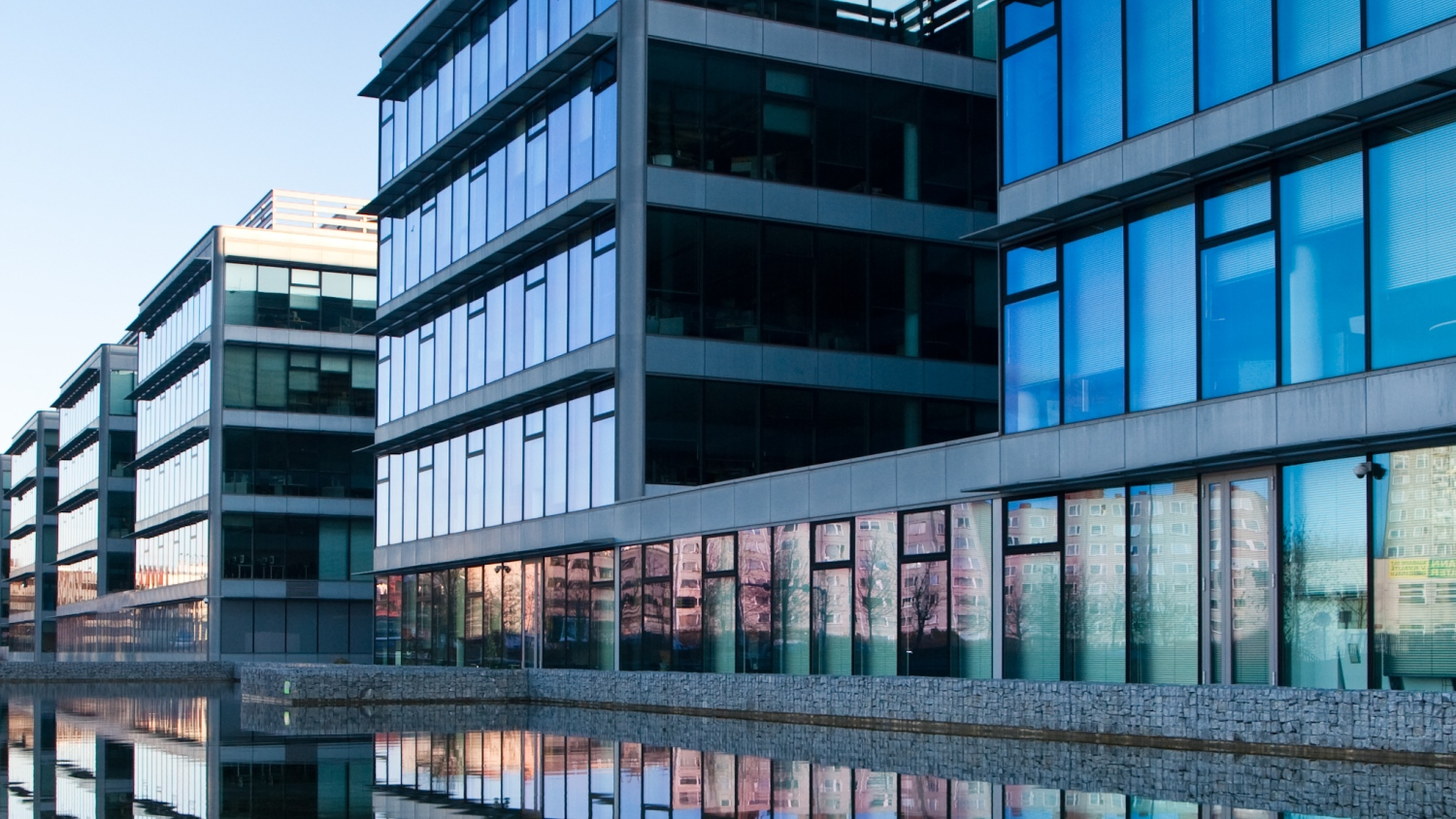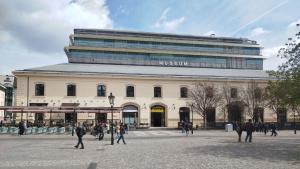
The office market is changing due to the coronavirus pandemic, albeit not as dramatically as initially expected. Offices as a concept are definitely not over and working from home is not becoming a lasting standard – it has been confirmed that it has its limitations and that personal contact is irreplaceable. A hybrid model, combining working in the office and at home, will likely be more common. Office space take-up is still below the pre-crisis figures, but the activity on the market has been growing recently. For the time being, the growth has not been enough to justify the growth in rental prices that would be necessary due to an increase in construction material prices, but both can be expected to grow in the future. The crisis has halted the progress of some schemes, so we will not see a major increase in new office stock before 2023. This could result in demand overhang, and thus in increased rents in the years to come, according to Cushman & Wakefield.
Key findings
- This year, the supply of new office stock has been the lowest in five years; the development will be similar next year
- Take-up is still below 2019 figures, but the rental activity in the market has been increasing in recent months
- Future growth in take-up and more expensive development should drive rental prices up
- Companies do not have office space surplus: space for sublease has decreased
- The office concept is not over – a hybrid model that combines working in the office and working at home is the winner
Fewest new projects in five years
Contrary to certain expectations, the coronavirus crisis has not brought about the end of offices: work is not moving into homes, cafés or co-working centres for good. However, the uncertainty regarding their future at the beginning of the crisis, with the massive shift of employees towards working from home offices, affected developers’ construction activities. They suspended projects in their pipelines and waited to get a better idea of what volume of office space to supply to the market and when. Development also suffered due to a lack of workforce and banks’ reluctance to provide credit. We are feeling the impact of suspended development this year, as the amount of office space delivered to the market has been the lowest since 2016. Whereas the average figure is about 150,000 sqm, it will be only about 70,000 sqm of new space this year.
“There will not be many more new projects on the office market next year than there have been this year. While developers have found out that offices will still be necessary, project development takes time. Optimism is returning and several quite large projects have already been launched, but their completion is not expected before 2023,” Radka Novak, International Partner, Head of the CEE Office Agency Team at Cushman & Wakefield says.
More expensive development – higher rents?
Developers’ plans have also faced roadblocks in the form of growing construction costs and a shortage of workforce. Given the current hikes in construction material prices, they have had to repeatedly requote their projects, and in order to achieve profit they need to calculate with rents above today’s standard – the highest achievable rent in this year’s third quarter was 22 euros per square metre and month. However, the current low demand is not conducive to rent growth, as it is still well below the pre-crisis level. Although the net take-up has been growing for five consecutive quarters now – adding 17 per cent in the third quarter over the preceding quarter – so far this has not been enough to justify the growth in rents that developers need.
Tenants whose lease terms are coming to a close tend to renegotiate their existing leases rather than move into new premises. One of the reasons is that their costs are also affected by the growing prices in the construction industry: even though owners usually contribute to office conversions, tenants still bear a part of the initial capital expenditure – and the amount is now 30 per cent higher than it was two years ago.
In addition, tenants will be hit by increased utility charges due to the growing energy prices. They are likely to prefer more efficient, “greener” buildings over older and more energy-intensive facilities as a result. This will drive the pressure towards environmentally sound solutions in building construction and operation; long-term sustainability and low-cost operation are among the most discussed trends for the years to come.
“As much as it is justified from the point of view of higher costs of development, the rent increase depends solely on the supply to demand ratio. Only when demand grows significantly and vacancy rates decrease will we see an aggressive hike in the rental prices of space. This is likely to happen next year, primarily in the most popular office locations where the vacancy rate is about five per cent,” Radka Novak adds.
No major office downsizing
Companies are not shedding “surplus space” as much as they were expected to during the early stages of the crisis. Their initial enthusiasm at seeing that working from home is possible with the same efficiency gave way to sobering up with regard to work productivity, motivation, cooperation and sharing experience. All of the aforesaid suffers when personal contact is impossible, so firms definitely want to retain the option of working and meeting in offices. In addition, aggressive reduction in office space is further hindered by the fact that, in most cases, it can only be done at the end of a rental cycle.
Many businesses planned on subleasing redundant space in the meantime, before their lease agreements expire; as a result, the amount of space offered for sublease increased extremely last year and early this year. The increase was extreme simply because office subleases had been rather rare in Czechia previously due to rental periods being as short as five years, unlike in the UK, for example, where lease agreements are often concluded for as long as twenty years.
“While the space offered for sublease increased office space vacancy rates by up to two per cent early this year, its amount has decreased significantly during the last two quarters – some of the space has been leased, there is not a lot of new stock replenishing the supply, and many companies are withdrawing their existing offers because they no longer count on a massive transition to working from home and realise they may need the space again,” Radka Novak comments.
Back to the offices – in Czechia, this holds true more than elsewhere
Companies all over Europe expect employees to return to offices, although the anticipated timing differs with the current epidemic situation and company size. Large corporations with more than 100 employees per site are more careful, planning the return for early 2022 or even later – but they are planning it for certain.
The ongoing return to the offices was obvious in Czechia during the autumn: the Google Mobility Report data monitoring the movement of people in office hubs showed in early November that Prague was the least removed from the pre-crisis standards compared with other capitals. While the mobility in comparison with the figures from early 2020 was still 37 per cent lower in London, 30 per cent lower in Amsterdam, 26 per cent lower in Warsaw and 24 per cent lower in Berlin, the difference in Prague was just 15 per cent down from figures common previously.
The greater desire of Czechs for working in offices can be explained by the fact that, before the coronavirus crisis, the notion of working from home was much less common in our country than it was in other European countries. As Eurostat says, more than 14% of employees in Finland and the Netherlands worked from home in 2019, whereas in the Czech Republic it was just 4.6%. Certain technology firms tried to deploy the concept of remote work and sharing office space on a large scale here several years ago, but without greater success.
“The more positive relationship to working remotely, which we see in foreign countries, is now spreading in Czech offices of international corporations – in my experience, they tend to use this mode somewhat more. By contrast, this concept is sometimes less common at locally owned firms. The company’s managerial style also influences this – it depends on whether the management trusts their employees and leaves decisions up to them. The culture, atmosphere and overall environment in the company greatly shape the employees’ willingness to return to offices. If they are reluctant to come back, it is good to think about why and how to change it,” Radka Novak says.
In the office for just a few days a week
Although many companies would like to have their employees fully back in the office, there is no going back to the former mode of almost 100% presence in offices. Most companies tend to use a hybrid model where employees work in the office for a part of the week, and at home or elsewhere for the other part.
“Of course, this depends on the company’s field of business and on the specific job positions. For the time being, companies are testing operation in this mode, since the full transition to this way of working with all its benefits requires a change in the office concept, and that takes construction modifications and capital expenditures. As such, this is best done at the end of a lease term,” Radka Novak adds.
The mode of employees taking turns working in the office brings about sharing worksites when several people take turns working at one desk. This change is not always accepted warmly – which is why companies pay great attention to change management today.
“This is all about re-adjusting the employees’ attitude, helping them get used to the new environment and learn how to use it efficiently. Working on this, we conduct structured interviews with employees, probing the mood and culture in the company, its specificities, and how to best adapt to them. Ambassadors from various departments and positions across the company help a lot with this, as they can influence their colleagues and help them accept the changes,” Radka Novak adds.
Flexibility is the future
As much as employees may initially dislike sharing their worksites, this is usually the “price for the freedom” of flexibility. Those who want to work in the office full time can usually keep their own desk. It is crucial for the firm to respect the individual employees’ wishes and cater to their needs, especially today in the context of the extremely low unemployment rate and fighting for talents. For example, the option of working outside the office is a standard requirement for Generation Z. Still, junior employees need leading, learning and sharing experience more than experienced colleagues, and this is best done in personal contact at the worksite.
“The pandemic bereaved employers of the previously common argument to the effect that the only way to work efficiently is in the office where employees must be under supervision for eight hours a day. In turn, employees can no longer claim that they are consistently equally productive and motivated at home as they are in the office. At the end of the day, flexibility will be the key to maintaining efficiency and satisfaction on both sides and achieving the desired working environment situation,” Radka Novak concludes.



